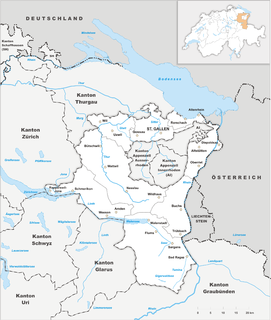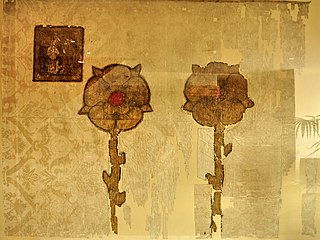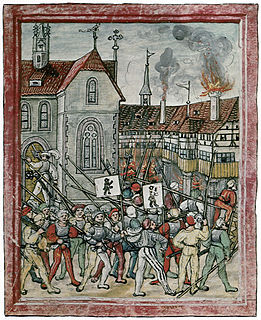 W
WThe canton of St. Gallen, also canton of St Gall, is a canton of Switzerland. The capital is St. Gallen.
 W
WThe counts of Toggenburg ruled the Toggenburg region of today's canton of St. Gallen, Switzerland, and adjacent areas during the 13th to 15th centuries.
 W
WFrischenberg is a ruined castle in Sennwald, canton of St. Gallen, Switzerland. It was built in the early 14th century by the lords of Hohensax, probably by Ulrich III von Hohensax some time after 1313. It was destroyed and rebuilt in 1446, and abandoned in 1551.
 W
WThe House of Rapperswil respectively Counts of Rapperswil ruled the upper Zürichsee and Seedamm region around Rapperswil and parts of, as of today, Swiss cantons of St. Gallen, Glarus, Zürich and Graubünden when their influence was most extensive around the 1200s until the 1290s. They acted also as Vogt of the most influential Einsiedeln Abbey in the 12th and 13th century, and at least three abbots of Einsiedeln were members of Rapperswil family.
 W
WThe Rorschacher Klosterbruch or St. Gallerkrieg was a war between the Abbey of Saint Gall, Zürich, Lucerne, Schwyz and Glarus against the city of St. Gallen and Appenzell in 1489 to 1490.
 W
WSäntis was the name of a canton of the Helvetic Republic from 1798 to 1803, consisting of the territory of St. Gallen, Appenzell, and Rheintal. Its capital was St. Gallen.
 W
WThe County of Sargans was a state of the Holy Roman Empire. From 1458 until the French Revolutionary War in 1798, Sargans became a condominium of the Old Swiss Confederacy, administered jointly by the cantons of Uri, Schwyz, Unterwalden, Lucerne, Zürich, Glarus and Zug.
 W
WThe Lordship of Sax-Forstegg was a territory in the Alpine Rhine Valley, including the settlements of Sennwald and Altstätten, now part of the canton of St. Gallen, Switzerland. It was named for the baronial family of Sax and their castle Forstegg. It was created with the division of the old Lordship of Sax into Hohensax and Frischenberg in the late 14th century. In 1458, the lords of Sax-Forstegg entered a pact with the Swiss Confederacy. In addition, they were also citizens of St. Gallen from 1463, and citizens of Zürich from 1486.
 W
WWerdenberg was a county of the Holy Roman Empire, within the Duchy of Swabia, situated on either side of the Alpine Rhine, including parts of what is now St. Gallen (Switzerland), Liechtenstein, and Vorarlberg (Austria). It was partitioned from Montfort in 1230. In 1260, it was divided into Werdenberg and Sargans.